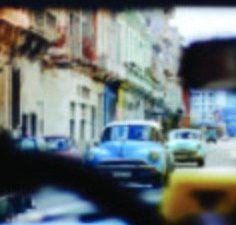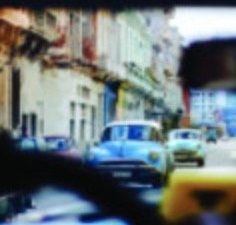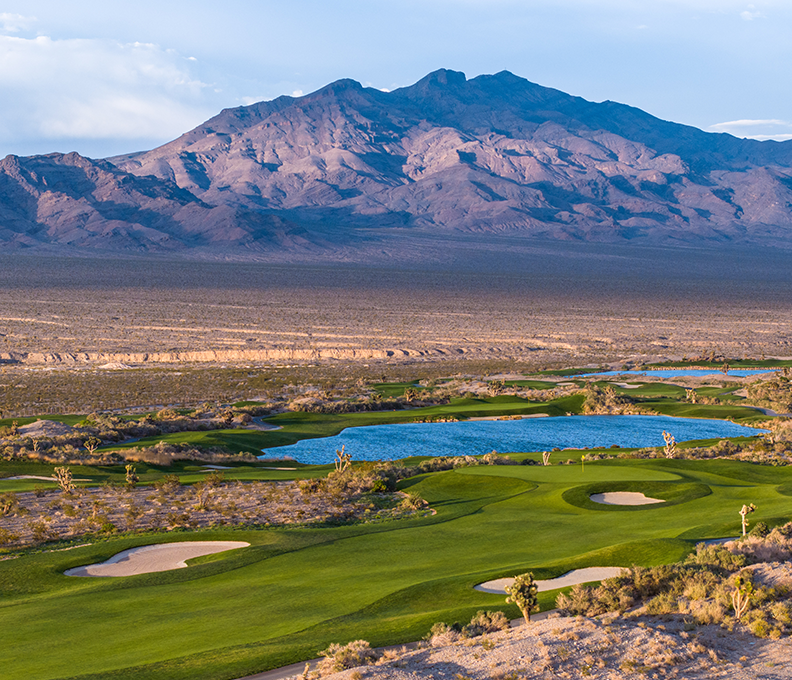Revolutionary road
March 31, 2017


I am sitting in the back of a vintage Chevrolet, rumba playing on the radio. A policeman has stopped cars from moving in any direction and, as the minutes tick by, I wonder what the delay is. I try to download a data package for my iPhone while I wait, but there’s no 3G in the country.
Looking up, I see a black car cruise past with four men in army fatigues inside, then a van with the sliding door open. Right there, in full view, is Fidel Castro. A gaunt figure in a white jacket and snowy beard, the 90-year-old revolutionary is unmistakable. “Fidel!” my driver exclaims. And then he is gone.
Political Wrangling
In March 2016, Barack Obama became the first US president since 1928 to visit Cuba, located only 90 miles across the water from Florida. He was welcomed by Fidel’s younger brother, Raul, who took power in 2008. After years of hostility between the seat of global capitalism and one of the last vestiges of Marxist-Leninist socialism, Obama promised the initial easing – followed by the wholesale lifting – of its trade embargo on the Caribbean island, in place since 1960.
Until recently, people from the US – including Cuban migrants – were unable to travel to the island. While tourism is still prohibited, there are now 12 categories for authorized travel including “family visits” and “professional research and meetings.” In August, US airlines were given approval to start flying to Havana, with American Airlines, Delta, Jet Blue and United among those set to launch routes.
Up until Nov. 9, when Donald Trump was elected 45th president of the United States, progress was unfolding. Now things are a little more uncertain as to the future direction of this fragile relationship between the two nations. Weeks before the election Trump had declared that he would reverse the concessions Obama had granted “unless the Castro regime meets our demands.”
Monica Lopez, who worked for the British embassy for 18 years and is now head of practice at Cuban business relations consultancy Cognicion, offers some reassurance: “I am not particularly concerned by the election of Donald Trump when it comes to embargo regulations. Many of the changes are practically irreversible and I trust that he is, above all, a businessman who can see the potential of Cuba and take into account the increased interest of US companies.”
Paying It Forward
Havana is positioned on the north coast of the 42,500-square-mile island, great waves crashing into the Malecon promenade that faces the Straits of Florida. Although it has its own harbor, a new deep-water mega-port is being built in Mariel, 27 miles west of the city. A special economic zone will also be set up here, with the first international companies moving in at the start of 2016. It is forecast to create 70,000 jobs.
With a population of 11.2 million (two million in Havana), the annual GDP of Cuba was $77 billion in 2013. Economic growth was 4 percent in 2015. The Economist warns: “GDP growth will slow sharply in 2016-17 owing to reduced export income and aid from Venezuela, but better ties with the US will facilitate a gradual pick-up in 2018-21.”
Cuba’s main export earnings come from healthcare, biotechnology, pharmaceuticals, nickel and tobacco – in 2014, the country exported 91 million cigars but production could rise by 20 percent annually if the US embargo is lifted. Renewable energy is a growing sector – in 2013, a £140 million deal between UK Havana Energy and Cuban Azcuba will see five biomass power stations built.
Dual Economy
Being a cash society, there are few places you can use credit or debit cards. In 2015, American Express and Mastercard said they would launch operations in Cuba, although my Amex didn’t work when I visited in October. Other challenges included having to wait four hours to pick up my rental car, and only having WiFi in the big hotels. Public hotpots, for which you can buy a voucher in the street, can be slow (WiFi is illegal in homes, and only 0.05 percent people have a fixed broadband connection).
It’s strange to come to a place that has been held back for so long, especially when, in its heyday, it was dubbed the Las Vegas of the Caribbean. Wealthy vacationers would jet over on PanAm for wild parties in Havana, cavorting at Club Tropicana and gambling in mob-run casino hotels such as the Nacional and the Riviera (both still operating today). All of this went on with the support of dictator Fulgenico Batista until his overthrow in 1959.
Outside of Havana, the most common mode of transport is horse and cart. There are more cars on the roads in the capital. After import restrictions were lifted in 2013, Kias from South Korea and Geelys from China became a more common sight – but at least 50 percent of vehicles are still American relics from the 1950s, mixed in with a few Soviet-era Ladas and Moskvichs.
“If you’re 85, you may think, boy, there’s been a lot of change in the past ten years in Cuba. But if you’re 25, it’s way too slow,” says Richard E Feinberg, the US author of Open for Business: Building the New Cuban Economy. It was only six years ago that citizens were allowed to buy and sell property and to open small businesses or co-operatives. There are now 201 self-employment categories relating to food, services, transport and house rental.
These are the green shoots of capitalism; the rise of the cuentapropista. If you have a car, you will likely pop a yellow “taxi” sign in the front; if you have a spare bedroom, you might list it on homestay.com. Walk the dilapidated streets of Havana and everywhere are anchor symbols advertising casa particulares (B&Bs). In April 2016, Airbnb announced it would allow Cubans to list accommodation on its platform. The country is now Airbnb’s fastest-growing market ever; with hosts earning an average of $250 per booking, it promises a life-changing source of income.
Whereas before, the ubiquitous dish of rice, red beans and pork, or a grilled cheese sandwich, were served only in state-run restaurants, now you can find private paladares serving fish tacos and handmade ravioli. More than 500,000 people now work in the private sector, up from 150,000 in 2010.
Being a cuentapropista is far from easy. “There is not an entrepreneur spirit – it is a survival spirit,” says Yanoidis Mejias Mendoza, consultant for entrepreneurship initiative Startup Cuba. An article on havanatimes.org reads: “The self-employed do not have a wholesale market where they can purchase supplies at fair prices. As their customers are mostly impoverished Cubans, the self-employed are forced to turn to the black market, where products are stolen from state workplaces.”
Nominal Wage
With no private (or government sponsored) banking system to provide commercial loans or mortgages, investment for private enterprise commonly comes from remittances sent by relatives in the US. Miami-based Havana Consulting Group estimated $3.3 billion was transferred in cash and goods in 2015.
The average state salary in this Communist nation is the equivalent of $25 a month, paid in CUP (Cuban pesos). But a second currency, the CUC convertible peso, is also widely used and desired – this is what you will be issued as a foreigner, and it has consequently created a second economy. One CUC is pegged at an exchange rate of one US dollar and is equal to 25 CUP, but prices are not always relative to wages, meaning commodities are expensive if all you receive are Cuban pesos. (A bottle of beer is 1CUC/25CUP.)
Tour guide Nelson Albuquerque tells me why he gave up his job as a lecturer at the University of Havana. “A peanut vendor or taxi driver could make more money than a professor because you can earn tips. I quit the university because I could only earn 1,000 pesos [$40] a month. In the eighties it was something like 300 or 400 pesos, which was enough, but the prices have gone up faster than salaries. It’s very demotivating.”
He adds: “Things are changing for the better, though. They are trying to raise the salaries of professionals and foreign companies are coming in.” What the government does provide are food rations, a home, free education and healthcare – medical expertise is one of the country’s biggest exports, generating $8 billion a year.
Opening Doors
Tourism accounts for 10 percent of Cuba’s GDP, with 3.7 million people estimated to have visited in 2016. Many are from Canada (1.2 million in 2015), but US travelers surged 77 percent in 2015 to 161,000, and travel from the UK was up 26 percent.
The problem is a shortage of hotels. Thanks to the 2014 Foreign Investment Law, there are plans for an extra 100,000 rooms by 2030, on top of the 65,000 presently. However, until 2014, 100 percent foreign investment wasn’t allowed, so there has been little presence from international brands apart from Spain’s Melia and Iberostar.
Still, Kempinski has been tipped to manage the five-star Manzana hotel in Havana when it eventually opens, while Accorhotels plans to open the Sofitel So La Habana in the UNESCO-protected old town in 2018. In March 2016, Starwood became the first US hotel group in 60 years to forge a management deal in Cuba. The Quinta Avenida in Miramar was rebranded under its Four Points by Sheraton brand in June, while the 19th-century Hotel Santa Isabel and the elegant Hotel Inglaterra will become part of the Luxury Collection when revamped. (All of these will be joint ventures.)
Soft power from the West has already come in the guise of the Rolling Stones, who gave a free concert in Havana last March. Two months later, Karl Lagerfeld staged a Chanel fashion show on Paseo del Prado boulevard. Flown in were 700 models, reporters, stylists, make-up artists and celebrities (including Kim and Kanye), while 170 vintage convertibles took part in a VIP parade, honking their horns as they drove.
What must Fidel have thought?
By Jenny Southan




